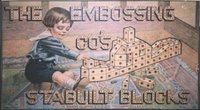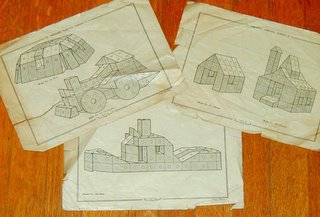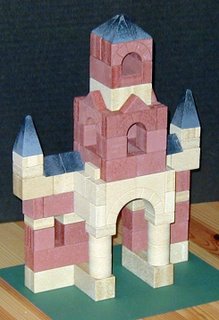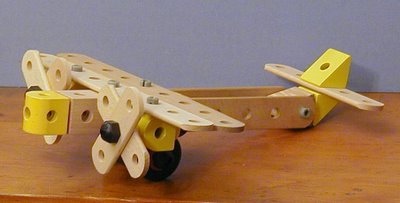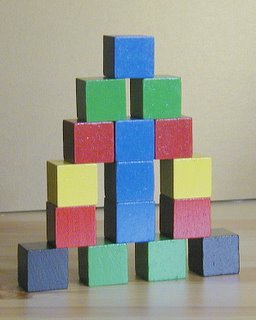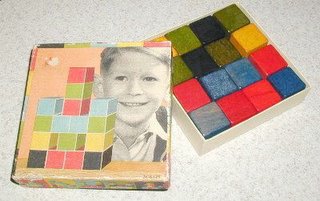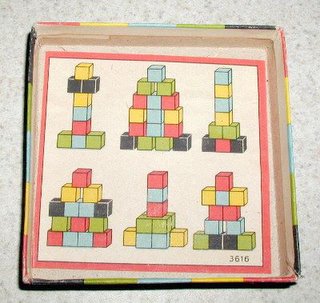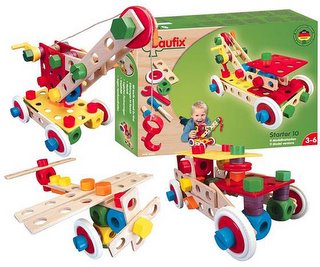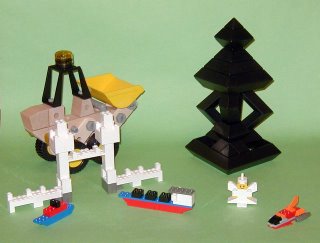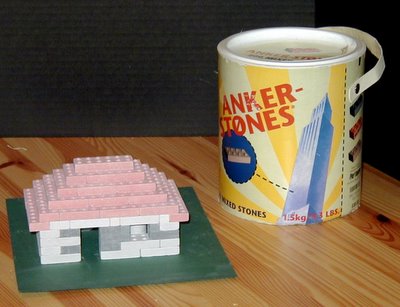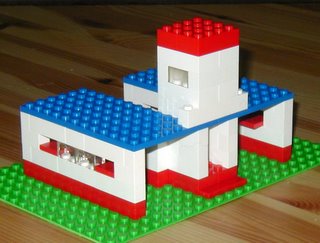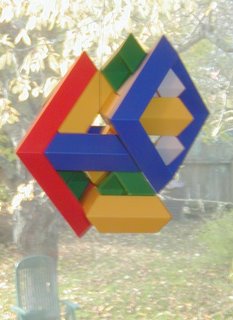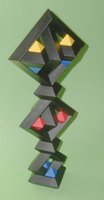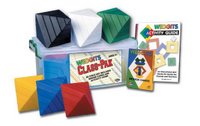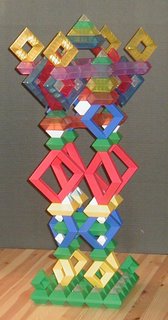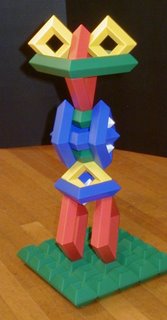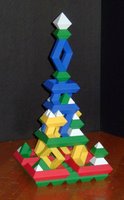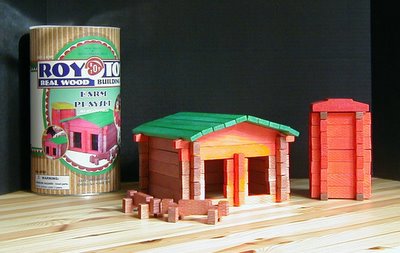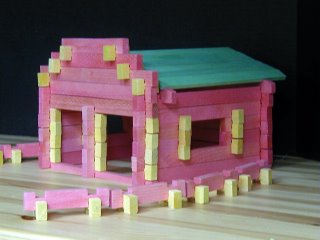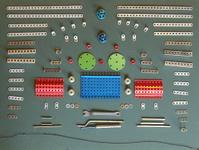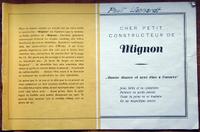
If you've read much in this blog, you know that I often need to work from examples, and sometimes that is a serious therapeutic need. You also may have caught on that I like cards best, with one project per card (or card side).
Yesterday I was out looking at toys (itself often a therapeutic activity) and saw an interesting looking game -
LEGO Builder Xtreme - with cards showing small constructions and the pieces needed to construct them.
As I was studying the box, I started thinking maybe I had that game, so I came home and looked. It turned out I had an earlier version -
LEGO Creator Game, which is probably close enough for me.
The key elements for me are that set of cards for various small constructions, and a corresponding set of LEGO pieces. The cards are differentiated by five color codes - each color has four cards which divide the pieces differently for four different constructions, so those four can be built simultaneously.
I put the pieces in a resealable bag, cleaned up the perforation fuzz on the cards and used a corner rounder punch to round their corners, and now have another ready-to-go kit for when I need a simple therapeutic activity. The game box, board, and rules went back where I found them - I may want them again for a grandchild or something.
A tentative project is to match the multicolored pieces in two or three single-color sets, since often when I particularly need a therapeutic activity, I am especially vulnerable to sensory overload, and the multiple bright colors might be too much for me. At other times, building the model without the color cues could be interesting or beneficial.
In the meantime, another nice therapy tool.

 "Reliable Easylock" bricks are the Canadian version of "American Bricks," which went through many versions in the United States, and were the Lego-counterpart of my childhood.
"Reliable Easylock" bricks are the Canadian version of "American Bricks," which went through many versions in the United States, and were the Lego-counterpart of my childhood.




